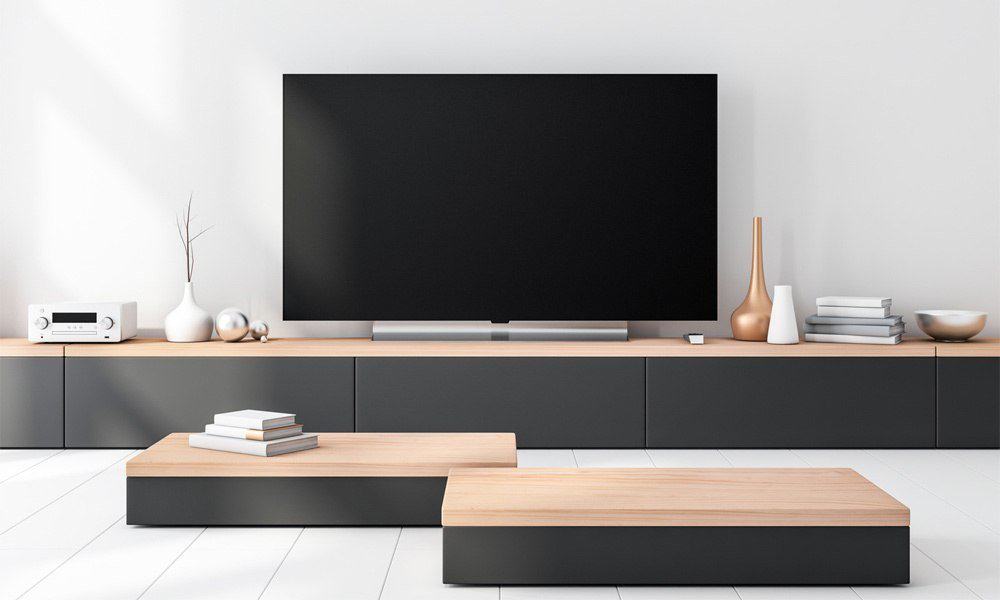When it comes to entertainment value, we all spend varying amounts of money on different entertainment devices. After all, there is no shortage of appliances, gadgets, and gizmos that you can buy to keep yourself entertained.
That being said, perhaps one of the most recognizable entertainment devices of all time is television. In this article, we will be taking a look at televisions in length, including their history and their distinctive features.
Before we get started, perhaps it would be worthwhile to go over what television is. It would certainly ensure that all our readers are on the same page once we dig in. So, what exactly is a television? An entertainment device with a surprising history of innovation and iteration and a ubiquitous term with a good amount of depth and meaning behind it.
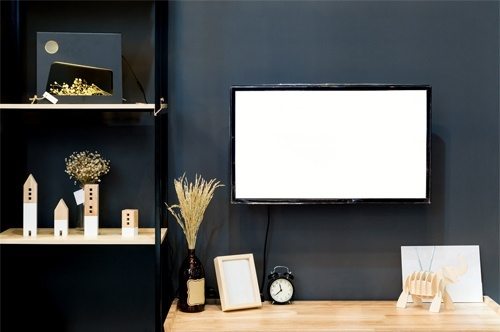
Most of us recognize and use televisions, but how do these devices work? Why does it show you video and audio content if you plug it in? How exactly does it operate? Why does it work the way it does? That is what we’ll be looking at in the upcoming starting sections.
If you feel like skipping ahead because you think you won’t learn anything new in the next section, just take a look at it anyway – you probably will learn a few (or a lot of) things you didn’t know.
With that in mind, let’s get right into it!
Table of Contents
Essentially, What Is a TV?
In very simple, surface-level terms, a television is a device that has a screen and can receive television signals. But beyond that and in more technical terms, television is a system for converting visual images (with audio/sound) into electrical signals, transmitting them by radio or other means, and then displaying them electronically on a screen.
The basic idea behind the television is that of radio with pictures. In the same way that a radio sends sound signals, a television sends both sound and a picture signal as well. Historically, the television was usually a three-way invention.
First, the TV camera or image processor itself, which converts pictures and sounds into signals. To be more specific, it is a device that uses light-sensitive image sensors to transform an optical image into a sequence of electrical signals. It does this to generate the primary components of the picture signal.
Second, the TV transmitter, which is tasked with sending the signal through the air. This transmitter basically radiates an audio signal and radio waves (which carry a video signal representing moving images).
Third, the TV receiver, which captures the sent signals and turns them into audio and video which are then displayed to you. It works by converting the video and audio radio waves of a television broadcast that has been picked up by a television set (such as through an antenna). The receiver reproduces the original visual broadcast, along with the sound.
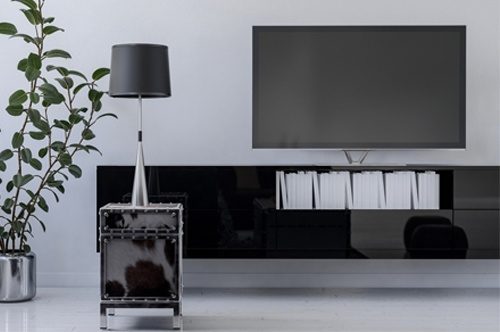
Composition of Television
The composition of television allows the device to reproduce audio signals and allows you to view video images. There were a few primary ways to do this:
- CRT
- Plasma
- LCD (including multiple variations of LCD screens are called QLED, quantum dot, LED, LCD TN, LCD IPS, LCD PLS, LCD VA, etc.)
- OLED
In the standard definition days, the cathode ray tube (CRT) was the central part of a television. Inside this tube are electrons that move rapidly from one field to another. These electrons stream from a positive to negative electric field towards a screen that is coated with phosphor. The phosphor starts glowing as the electrons hit the screen, which creates an image. Televisions create images by making very small pixels (dots) on the screen. Several of these dots on a screen, in a certain pattern, create an image. And when there are more pixels on a screen, the image quality will be higher.
In the high definition days, CRTs didn’t a whole lot of HD action. CRTs didn’t scale well with size so manufacturing went to other manageable form factors. Plasma and LCDs (and the variations that followed) allowed for bigger screens at a slimmer profile. We include more information on the tech in these other compositions in another update.
As you can see, television is not as simple a device as most people believe. Hopefully, this section helped you gain a better understanding of how they work.
History of TVs
Nowadays, you can find a television in millions of households, all across the world. But it may come as a bit of a surprise to hear that just a hundred years ago, nobody even knew what a television was.
Up until the 1920s and 1930s, the only “televisions” you’d find were mechanical televisions, which first appeared in the early 1800s and were a far cry from the electronic devices that would be invented a century later. In 1927, the first electronic television was invented, which sparked a revolution in the way people saw video images and sound. Since the 1920s, the design of televisions has improved drastically.
The world’s first television stations appeared in the late 1920s and the early 1930s. The first television sets commercially available to the American public were mechanical sets, which were shown off to the public in 1928. But the hype would really pick up a decade later when electronic sets were introduced to the public, which became an instant hit.
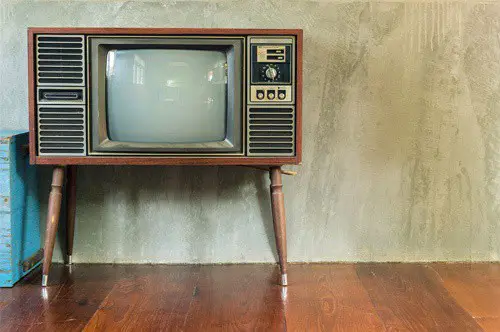
As World War Two rolled around, televisions began getting less bulky, and color television was introduced, which provided a refreshing update. More and more television stations started appearing as well, thanks to the instant popularity that television had managed to achieve.
After the 1950s, television development reached a bit of a peak in the 1980s, with the most major changes and improvements coming in this period. In 1993, about 98% of American households owned at least one television set.
Sleeker models, such as flat-screen televisions and HDTVs, were seen for the first time in 2004 when people realized that older sets were heavy and troublesome. Eventually, these new models became affordable over time.
Of course, the most significant change to television sets over the past few decades has been related to connectivity, size, and other aesthetic improvements. Today, instead of relying solely on cables or other older materials, television sets boast connectivity through Wi-Fi, Bluetooth, and other new wireless methods. What’s more, people today are frequently “cutting the cord” and moving away from traditional cable television, keeping their TV on for many hours at a time.
Rest assured, it is now easier than ever before to enjoy television, both for its entertainment value and for its newer, more functional models.
What Are the Types of TVs?
If you want to buy a TV, the very first thing you need to look into is the screen resolution. Before discussing the available options, you should know that screen size and screen resolution are not the same thing. Many people get confused between the two, but we’ll help clear that up. Just know they are both equally important and must be checked when you’re buying a TV.
The screen resolution of a TV means the number of pixels that create the picture on TV. If the number of pixels is low, the TV display may appear pixelated or not sharp enough, but as this number grows, the display quality of a TV also improves. This is the reason why the higher resolution is almost always preferred.
There are multiple screen resolutions to choose from. Looking into each available variation and judging its pros and cons can be exhausting. However, the best and most widely bought TV resolutions can be narrowed down to just three: HD, 4K, and 8K. Resolution is described in terms of horizontal rows and vertical columns of pixels. High definition TVs come with a screen resolution of 1920 x 1080, while 4K and 8K come with 3480 x 2160 and 7680 x 4320, respectively.
To save you from a long list, this TV guide will discuss just these top three types in detail, along with their pros and cons.
HDTVs: Full HD Resolution
HDTVs have been the usual standard for many years. However, as TV manufacturers rapidly move towards 4K resolution (which is 4 times higher than 1080p resolution), HDTVs are becoming less of the norm. Another reason for HDTVs to become less common is that buyers today prefer larger screens, and larger screens require higher resolutions. In fact, many TV manufacturing companies don’t even have 1080p models available for screen sizes over 40 inches.
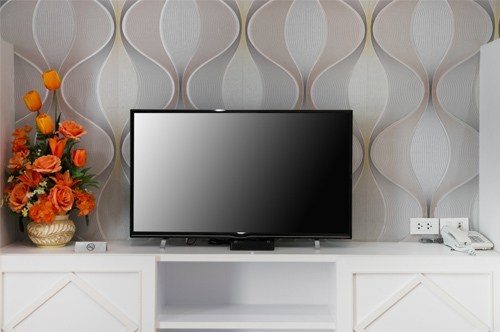
Does this mean that HDTVs are a thing of the past now? Not really. Most of the buyers do prefer larger screen sizes but there are still a large number of people who don’t own big living rooms to support wide TV screens. HDTVs are still the best option for these buyers. The difference in resolution is only noticeable in large screens, so anything below 40 inches would not show much of a difference whether you choose 1080p or 4K.
Keep in mind though, there are no longer many options when it comes to 1080p resolution TV models. It is only common for 32-inch TVs now as 4K 40-inch TVs get more affordable.
4K TVs: Ultra HD Resolution
The most hyped resolution today is probably the 4K Ultra HD. With a resolution of 3840 x 2160, Ultra HD offers around 8 million pixels in resolution, in contrast to full HD’s 2 million pixels. This makes 4K four times sharper than 1080p. To understand this more clearly, consider a 40-inch tv available in both full HD and Ultra HD variations. The screen doesn’t get bigger for higher resolution, the pixels get smaller to fit in the screen size instead. The result is a sharper, more defined, and detailed TV display.
Let’s understand what the term 4K actually means. Although this resolution is 4 times sharper and higher in definition, the 4 in its name actually refers to something else. In the real 4K cinematic view, there are actually 4096 horizontal lines of pixels. This makes the resolution 4096 x 2160. However, the shape of our TV sets hasn’t changed, so what we get is a slightly smaller version of this cinematic resolution. This is also equally good, considering the smaller size of our TV screens.

4K Ultra HD TVs are the most common resolution available on the market today. It is the optimal resolution to choose for larger screen sizes. With a 4K TV, small objects and text appear sharper and more detailed. The overall picture and video quality are improved noticeably as the colors get richer and images become more life-like. Some buyers think that higher resolution is not suitable to be watched from a short distance, but the reality is the opposite. 4K TVs can be watched comfortably from short distances as the picture is higher in definition and doesn’t appear to be pixelated up close. This is why ultra HD TVs are becoming more and more common in regular-sized homes.
As these TVs get mainstream, streaming services have also started offering 4K content. This includes Netflix and YouTube as well, so there are several 4K movies and shows for you to choose from. Comcast Xfinity, DirectTV, and Dish Network are now also offering 4K movies. However, Blu-ray discs and live TV have not yet fully shifted from 1080p to 4K and still have a long way to go. Some viewers use Ultra HD sets to upscale HD content, but the outcome there is not as sharp as the original 4K.
8K TVs: The Ultimate HD resolution
8K is four times better than 4K and 16 times better than 1080p full HD resolution. This means a massive resolution of 7680 x 4230, which is equal to over 33 million pixels! As pixels get even smaller, the TV display becomes brighter and more detailed and defined. 8K is currently the highest resolution available on the market. It is the latest technology, and as for now, it is far from going mainstream.
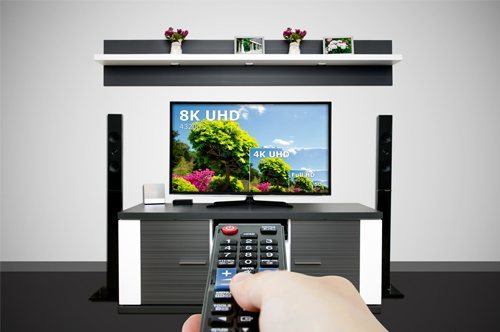
The reason for this is simple: Just like 4K resolution needed at least a 40-inch screen to show its capabilities, 8K resolution needs at least a 90 inch screen. If you want to buy a smaller screen TV, 8K and 4K would appear pretty much the same. The other reason is simply the high price tag of TVs that come with an 8K resolution. However, the most practical reason for 8K TVs not being bought commonly is the lack of 8K content.
Although several 8K TV models are already available, streaming services and live TV still haven’t embraced 4K yet. No movie has been released in 8K and there is no news on Blu-ray discs (or a player to support them) either. The only places where you can find 8K videos are YouTube, Vimeo, and one or two Japanese broadcasting services. Even streaming services like Netflix have no 8K content yet.
What Are Smart TVs?
The difference between a smart TV and a regular TV is almost the same as the difference between a smartphone and a regular phone. Unlike a regular TV, a smart TV offers internet connectivity and support for a wide range of apps like YouTube and Netflix. Older TVs were only able to receive signals from a cable service, an HDTV antenna, or some other A/V source. While there is nothing wrong with that, streaming services like Netflix and online video content have caused smart TVs to be much higher in demand than traditional “dumb TVs.”

Smart TVs open a whole new world of entertainment options. A smart TV is not just for watching Netflix or Hulu – it can be used to play games, check social media, and even control household gadgets like Alexa. In fact, smart TVs can be used in conjunction with a number of “smart” things. For example, you can use your smart TV to control your smart home security system, smart locks, smart lights, and much more.
Smart TVs usually cost around $100 more than a regular, comparable TV model. Most of the buyers today will pay this additional cost without hesitation, because you’re not just getting a few apps and streaming services with your purchase. For some models, the smart TV option even means better video quality and HDMI ports on the back. Make sure to do model-specific research about your TV before making a purchase.
Although smart TVs are widely bought all over the world, regular TVs still get their fair share of buyers. If you are absolutely sure that you don’t need any of the added benefits of a smart TV, it would be unwise to spend extra money on a smart TV.
Which is the Best TV Screen Size?
After screen resolution, the other important factor to consider is the size of your TV screen. There are several options to choose from. From small screens like 24-inch ones to large screens going over 100 to 200 inches, the possibilities are endless.
The very first thing you should know is that screen sizes are measured diagonally, from corner to corner. If you sit too close to the screen, the pixelation may cause distraction, but if you’re too far from the screen, you’ll miss out on the details. This is why the best choice depends on where you want your TV to go and how big that space is.
The most suitable TV screen size for your living room is different from that for your bedroom, as it’s based on the size of the room. To make sure that you get the best value for your money, it is important to know your best option.
Best Size TV for Living Room
The most commonly bought option for living rooms is at least a 50-inch screen, but it still depends upon the size of your living room and your average watching distance. Another factor to consider is your living room furniture: is it fixed or moveable? If your furniture can be moved around, your best choice is a lot more flexible.

In any case, the foolproof way to get the right screen size is to measure the distance between your preferred TV spot and your furniture. For example, the average distance is around nine feet, for which a 42 to 56-inch screen is usually suitable. Keep in mind, though, that the best screen size also depends upon the screen resolution. Larger screens with lower resolutions will display more pixelation than those with a higher resolution.
Best Size TV for Bedroom
When it comes to bedrooms, buyers usually prefer smaller screens. The reason behind is the difference between the TV-watching experience in the living room and the bedroom. Plus, bedrooms are generally smaller than living rooms. When you watch TV in your bedroom, it’s usually after a long day at work or late at night.
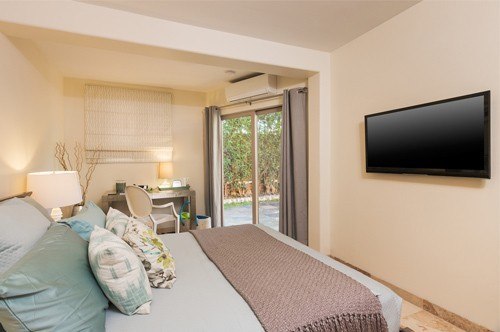
Both these experiences require the utmost level of comfort. Having a large TV screen right in front of your bed is not the most comfortable idea and also hurts your eyes if you’re watching to relax with the lights off. Screens between 30 and 50 inches are usually the most preferred size when it comes to bedrooms.
Streaming Media Players
A streaming media player is a portable hardware device that basically connects your TV to the internet. This enables your TV to play online videos from YouTube or Vimeo and also from streaming services like Netflix. Most of these devices come with a built-in Wi-Fi and remote control.
Whether or not you want to buy a streaming media player for your TV depends entirely on your requirements. If you’re buying an advanced smart TV, there is no such need for this additional device. However, if your smart TV is an old model or if you have a regular TV, investing in a streaming media player is not a bad idea. It provides almost all the services that a smart TV does, except giving you control of “smart” things around your house.
Final Thoughts
By now, you know everything to buy the right TV for your needs. Buying a TV is usually a long-term investment, so it’s important to do it correctly.
In this buying guide, we learned about different screen resolutions, screen sizes, smart TVs, and streaming media players.
The two most important decisions are screen resolution and size. In the end, it really comes down to your budget and requirements. And sometimes, the most expensive TV isn’t always the best choice. Depending upon these factors, make sure to make the right choice so that you don’t regret it later.
